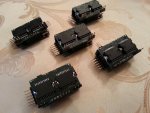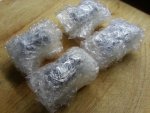Nabend ,
Musste jetzt erstmal das ganze zeug in die ecke packen ^^ ganzen tag gebastelt und programmiert , aber auf einmal ging irgendwie alles schief .
Erst hatte ich ein gutes spiegelvideo , dann ist die gopro alle gopro wieder geladen und dann ist mir ein kabel vom motor abgerissen ......
gopro wieder geladen und dann ist mir ein kabel vom motor abgerissen ......
Hab heute die sch.... voll davon
Werd morgen weiter machen , und dann hoffentlich auch mit video .
Schönen Abend noch
Musste jetzt erstmal das ganze zeug in die ecke packen ^^ ganzen tag gebastelt und programmiert , aber auf einmal ging irgendwie alles schief .
Erst hatte ich ein gutes spiegelvideo , dann ist die gopro alle
Hab heute die sch.... voll davon
Werd morgen weiter machen , und dann hoffentlich auch mit video .
Schönen Abend noch




